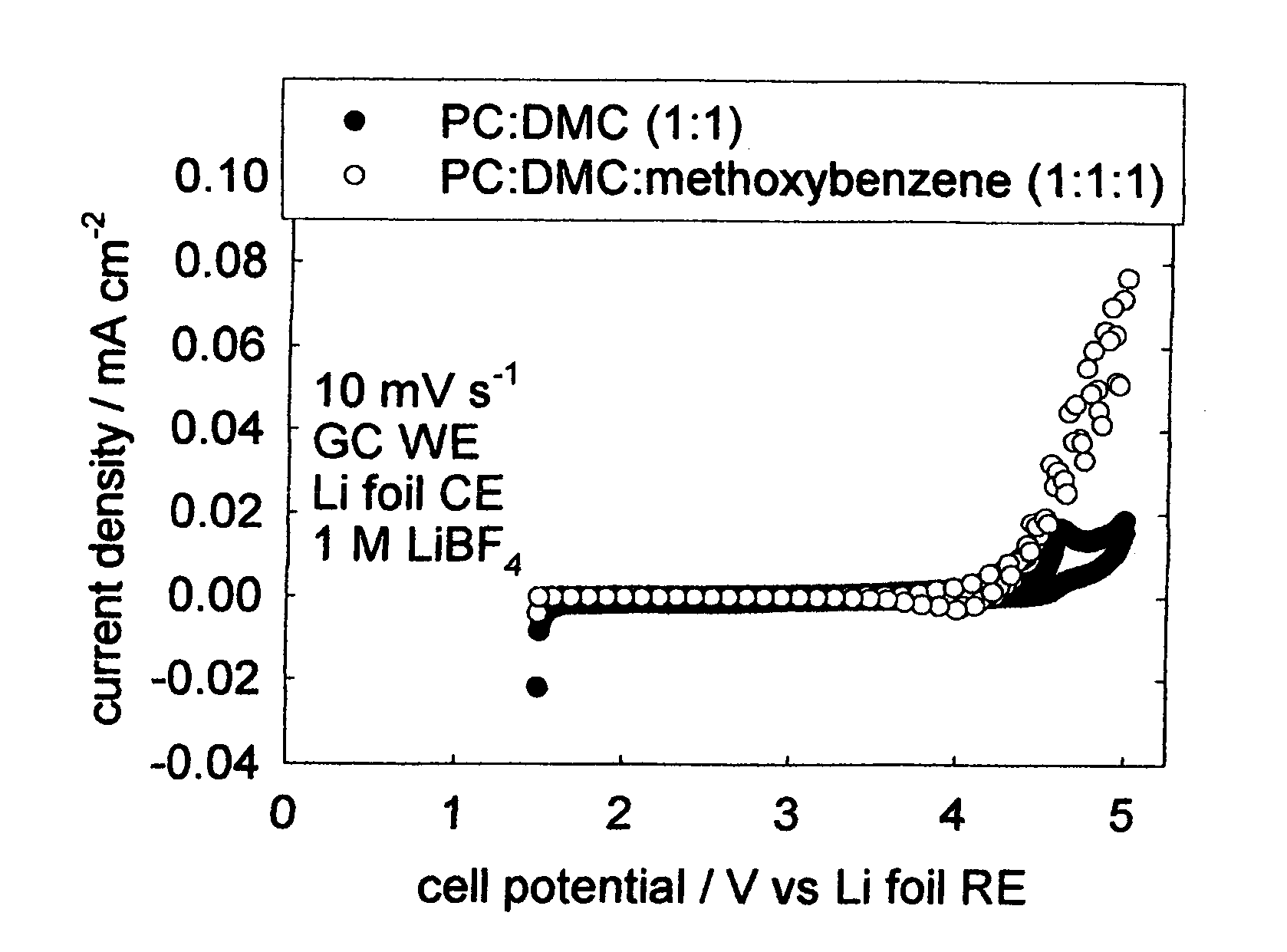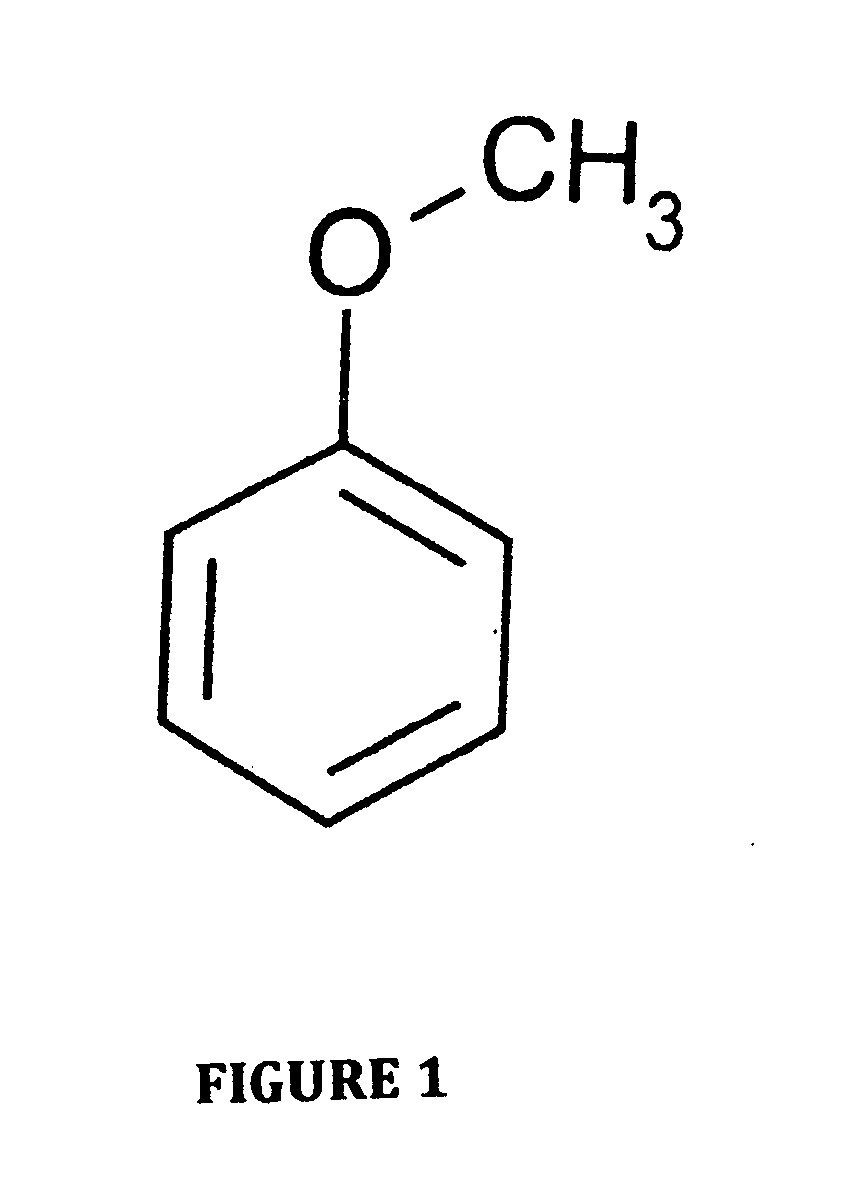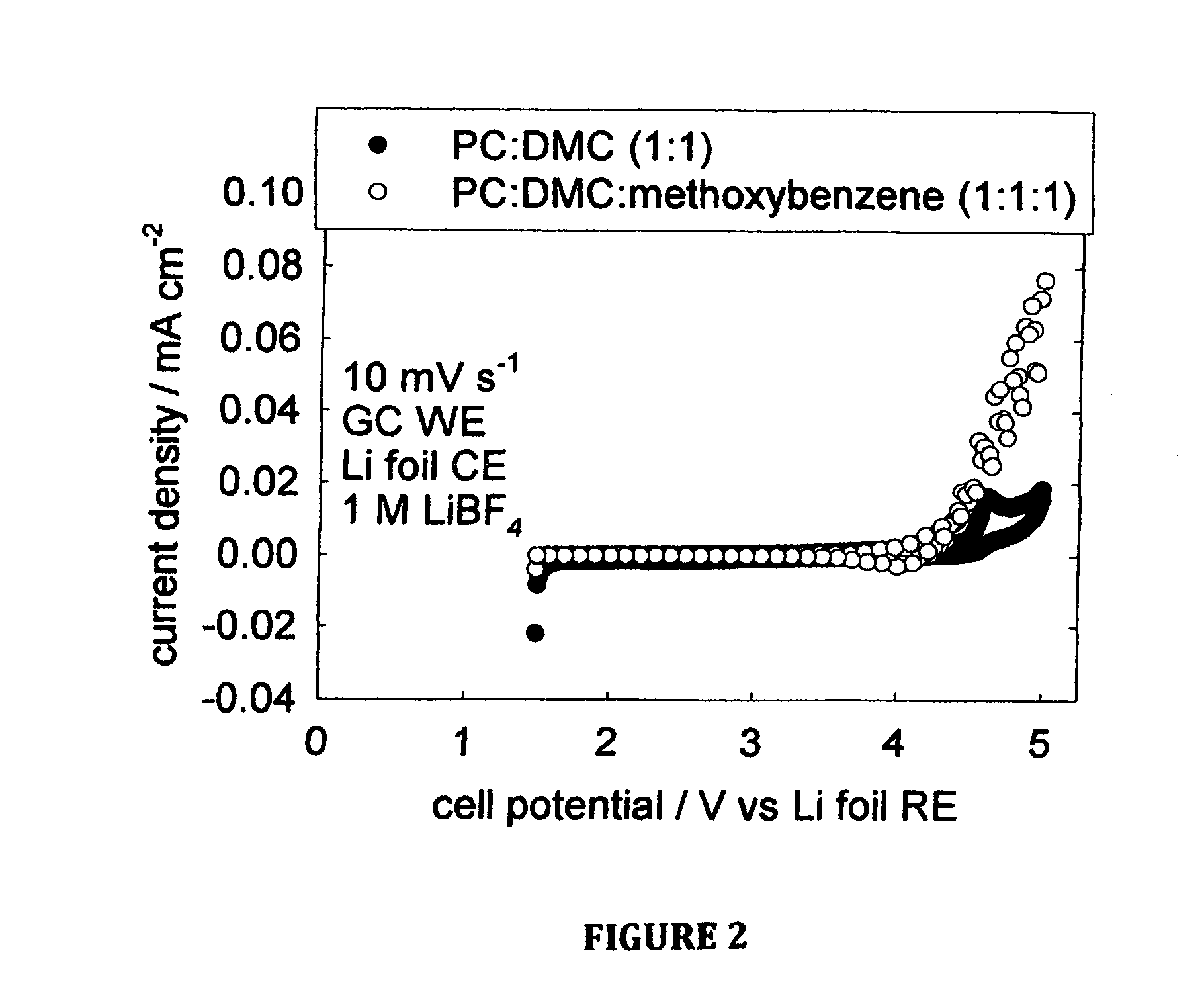Electrolyte containing methoxybenzene for use in lithium-air semi-fuel cells
a technology of methoxybenzene and electrolyte, which is applied in the direction of aqueous electrolyte fuel cells, cell components, electrochemical generators, etc., can solve the problems of cell failure and end of cell life, and achieve the effect of prolonging the operating tim
- Summary
- Abstract
- Description
- Claims
- Application Information
AI Technical Summary
Benefits of technology
Problems solved by technology
Method used
Image
Examples
example 1
Stability of Methoxybenzene Over Voltages of Interest in Primary Lithium-Air Semi-Fuel Cells
[0026]FIG. 2, which is one embodiment of the invention, shows the cyclic voltammetry of electrolyte solutions with and without methoxybenzene. Cyclic voltammetry is an electrochemical experimental technique where the voltage is varied linearly with time, here at a rate of 0.01 V s−1. The CV is obtained by plotting the resulting current density on the vertical axis and the corresponding potential on the horizontal axis. In this experiment, the working electrode is glassy carbon with an area of 1 cm2, the counter electrode is lithium foil pressed onto nickel ribbon, and the reference electrode is also lithium foil pressed onto nickel ribbon. The CVs for the electrolytes containing methoxybenzene and without methoxybenzene both produce negligible current density over the voltage range of interest for a primary lithium-air semi-fuel cell (˜3.5 V-˜1.5 V vs. Li RE). Since PC and DMC are known to be...
example 2
High Discharge Capacities Demonstrated by Lithium-Air Semi-Fuel Cells Using Electrolyte Solutions with Methoxybenzene
[0028]FIG. 4, which is another embodiment of the invention, shows the discharge capacities of lithium-air semi-fuel cells in O2 as a function of current density. These cells were built in the same manner as described above in the discussion of FIG. 3, except O2 was permitted to enter these cells. These cells were discharged in a heat sealed pouch containing approximately 7 cm3 of electrolyte solution. The pouch contained a 10 cm2 porous Teflon window pressed onto the side of the cathode facing the atmosphere that permitted O2 into the pouch, while preventing liquid electrolyte solution from leaking out of the cell into the atmosphere. The entire pouch was placed in a bag filled with O2 at 1 atm. These cells exhibited extremely high discharge capacities: 4767 to 6741 mAh g−1 C at 0.2 mAcm−2, 2130 to 3710 mAh g−1 C at 0.5 mAcm−2, and 421 to 753 mAh g−1 C at 1 mA cm2.
[00...
PUM
| Property | Measurement | Unit |
|---|---|---|
| metallic | aaaaa | aaaaa |
| permeable | aaaaa | aaaaa |
| solubility | aaaaa | aaaaa |
Abstract
Description
Claims
Application Information
 Login to View More
Login to View More - R&D
- Intellectual Property
- Life Sciences
- Materials
- Tech Scout
- Unparalleled Data Quality
- Higher Quality Content
- 60% Fewer Hallucinations
Browse by: Latest US Patents, China's latest patents, Technical Efficacy Thesaurus, Application Domain, Technology Topic, Popular Technical Reports.
© 2025 PatSnap. All rights reserved.Legal|Privacy policy|Modern Slavery Act Transparency Statement|Sitemap|About US| Contact US: help@patsnap.com



